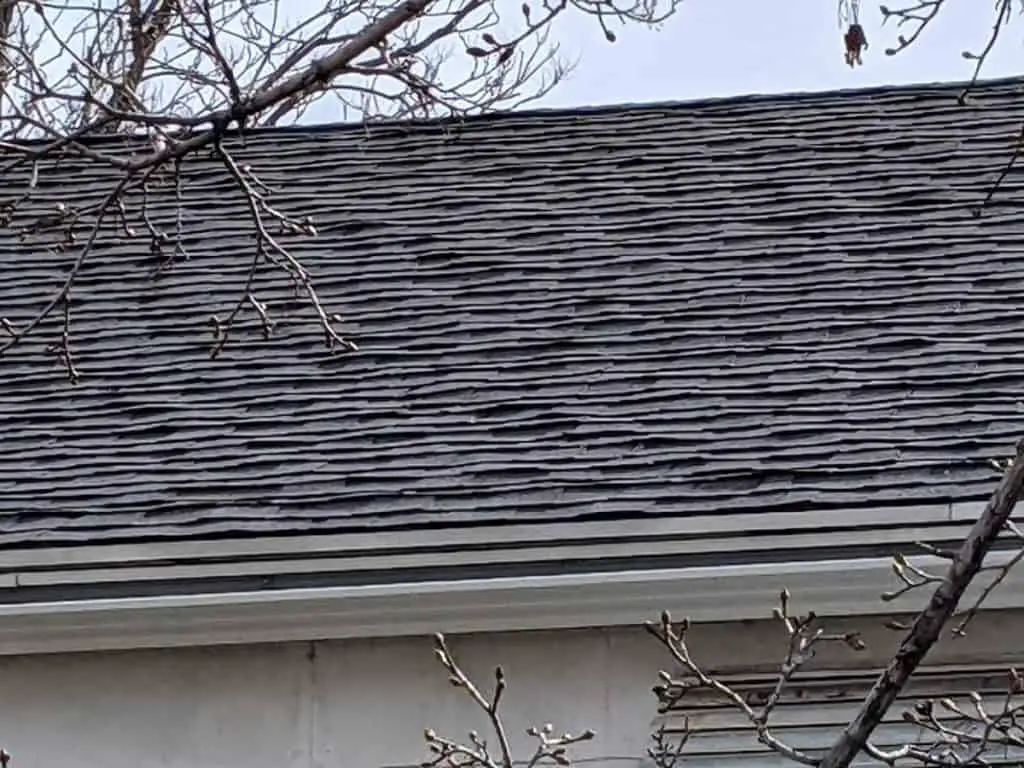
Need a lift? Shingles don’t, and they shouldn’t. If you find that yours are lifting, here are the possible causes and what you need to do to fix them.
Why are my shingles lifting? Shingles lift due to a variety of reasons. It could be due to temperature fluctuations, the presence of moisture, sunlight, strong winds, or bad weather. It can also be caused by improper roof installation, foot traffic, and brand-new installation.
If lifting roof shingles aren’t fixed as soon as possible, it could lead to leaks and further roof damage. It may also mean, it’s time to get a new roof. Whatever it is that caused the damage, there is are solutions available for all of them.
Are Shingles Supposed to Lift?

If you just got a new roof and noticed some of the shingles aren’t flat yet. Don’t worry, the chances are that the roof was shingled in cooler weather like during the fall and winter seasons.
If this is the case, the lifting shingles are caused by the shingles not having a chance to warm up yet. When shingles warm up they lay flat and the tar on the bottom of the shingle gets soft and sticks to the shingle below it. This creates a good seal and allows the shingles to lay nice and flat.
However, if you notice your shingles start lifting after shingles have had a chance to stick then it means there are problems that need to be addressed immediately.
Asphalt roof shingles are smooth and flat when you view them. It’s not always clearly visible from the ground and so if you suspect some lifting, you can call a roofing company for an assessment.
Shingles lift due to natural causes and those caused by installation and repair. It is inevitable for the roof to eventually lift but there are ways to lessen and fix these situations.
Shingles Lifting Due to Weather
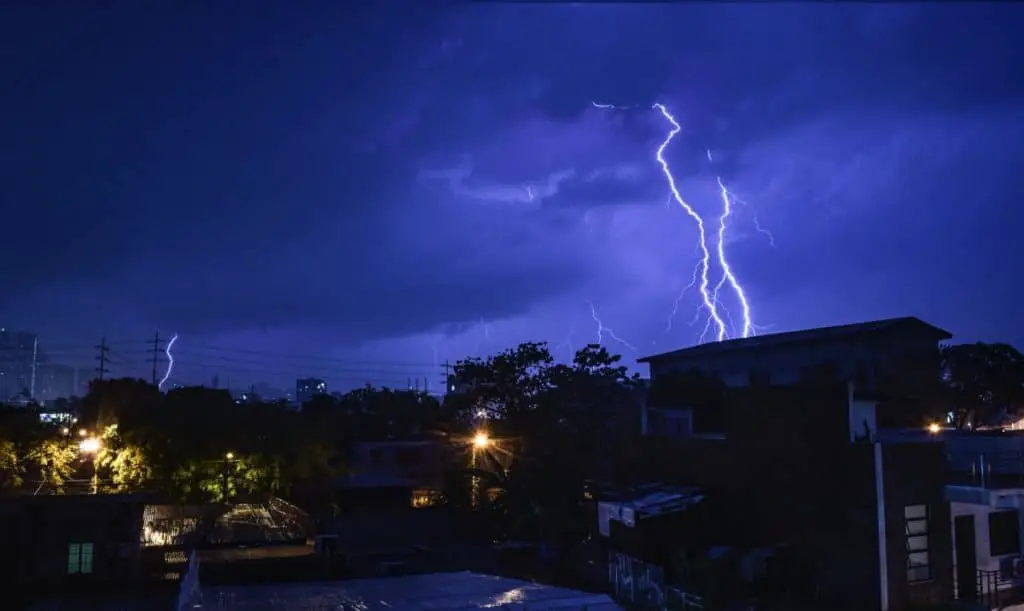
Strong winds can cause your roof shingles to lift which could result in roof leaks. Even without hailstorms or other harmful weather.
Shingle damage can begin at a wind speed of 50 mph, even if your roof shingles are rated to handle up to 90 mph of wind speed. These winds do not hit the roof evenly and so the corners, edges, and ridgelines are more susceptible.
The suction effect from the high winds coming up over a roof can cause the shingles to lift upward, which will also loosen the nails holding them down. This, too, can also break the sealants in between layers of shingles. Loose nails and broken sealants can be avoided or repaired through proper installation.
The type of shingles you have also affects how they handle the wind. From my experience, one of the most common wind-damaged shingles is the basic 3-tab shingles.
I often see them with less than 3 tabs because they blew off. Architectural shingles do a better job of handling the wind than the 3-tab shingles.
Not all shingles are resilient to changes in temperature and moisture. Shingles are especially affected during the winter season which is why assessments are normally advised to be done during fall.
Similar to lifting, shingles can experience curling in cold temperatures hence the phenomenon “winter curling”. This phenomenon refers to the front edge of the shingle lifting slightly but goes back to its flat state when the warm weather creeps back in.
Shingles Lifting Due to Improper Installation
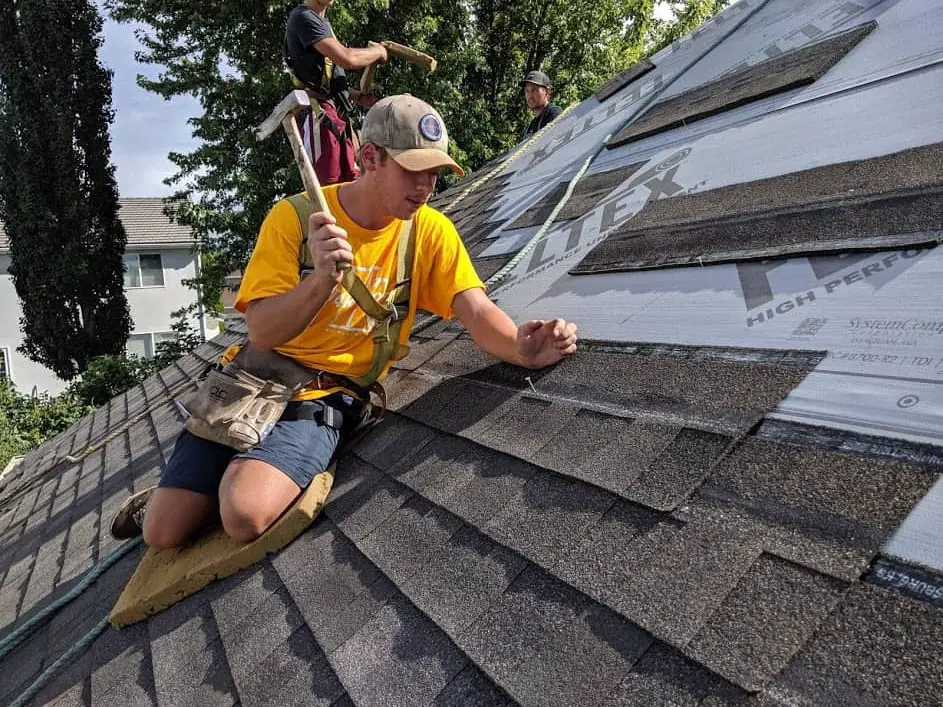
Improper roofing installation could have caused shingles to be damaged during the process. They could have been damaged when nails were being driven. If already damaged shingles were still installed, this will make them more susceptible to future damages, especially due to bad weather. The shingles should be flat, stacked, and covered properly before installation. Any torn or bent roof shingles should not be used.
It’s also possible that the shingles weren’t secured properly. There may not have been enough nails used, or they were not spaced correctly, or they weren’t driven in all the way. The person to install the shingles should have enough tools to make sure that the shingles are all secured. There are proper nailing techniques you or the roofers can adapt, one of them to be mentioned in the next section.
Alongside the use of nails, adhesive strips are used as sealants and the person installing them should align the shingles properly upon application. If this was not done correctly, shingles will have been securely held by the sealants in the wrong place. You could expect them to lift, curl, or fly off. There is a way to repair broken sealants which you will find in the section below.
Shingles Lifting Due to Foot Traffic
Work areas around the roof can cause shingles to lift, particularly in areas where there are chimneys and skylights. Shingles can break or be lifted on the edges when workers move about the roof abruptly. Walking on the roof should be done with caution as it can cause damages that were not originally there in the first place. Shingles are especially susceptible to foot damage after they have become soft from baking in the sun.
Lifting on Old and New Roofs
Even if your roof is newly installed, shingles can still lift. It’s possible that the shingle adhesive hasn’t been fully sealed yet or nails did not get put in all the way. In this case, naturally waiting for the seal to set is enough for your roof to be fixed and the nails can be driven all the way if handled with care.
Age does play a role in the shingles’ resistance to lifting but with the number of factors that can affect it, your shingles can still lift even if it’s just a few years old. They can start lifting as soon as after 6 months of installation.
How to Fix Lifted Shingles
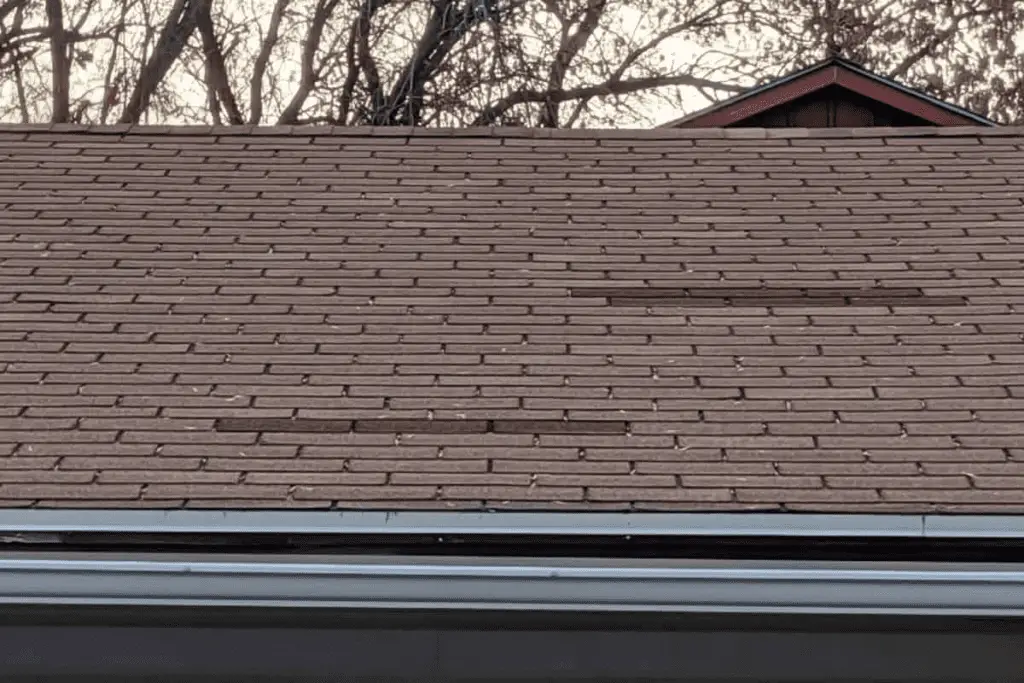
Some shingles can be repaired while others have more damage to them and therefore need replacing. The challenge to this is that you will also want to have a close-match replacement. As shingles age, the color starts to fade. Your roof can look pretty bad if it is patchy with multiple different colors of shingles. Usually, roofers will leave you with a few shingles that you can keep in storage for situations like this. But if you do not have any in storage you may be able to buy a matching color. If not, you may just have to put up with a patchy-looking roof.
Get a Roof Inspection
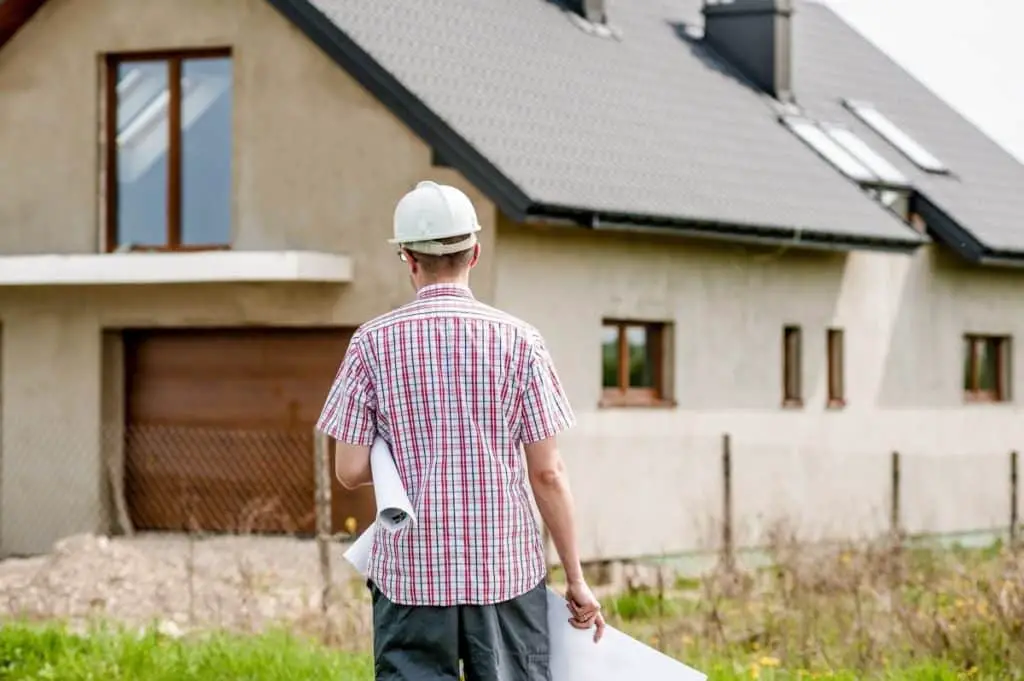
After significant weather events should not be the only time you have your roof inspected. You might want to have a yearly roof assessment before the winter season, as the cold temperature does contribute to roof shingles lifting. Making repairs on icy roofs is also dangerous even for professionals.
A roof inspection can also help you spot damages to vents or pipe flashings. Having damages to these will cause a direct leak into your attic. It is much better to spot any damages before the rain comes.
I recommend finding a professional roofing contractor through our trusted partner Home Advisor because they allow you to get up to 4 quotes for free. This allows you to compare and choose the best roofing professional for your needs. Check them out by using this link.
You, as a homeowner, can definitely spot missing or flapping shingles but there are damages that may not be visible to the untrained eye. This is why you’ll want to contact a professional to do the assessment. This is especially advisable for roofs older than 10 years.
A professional roof inspector will generally perform the following:
- Structural inspection for uneven planes, signs of sagging, cracks, and crumbling
- Material inspection for loose or missing shingles
- Interior inspection for leaks, stains, molds, and rots
- Workmanship inspection to ensure that installations were done properly
- Damage inspection for any damages to pipes, vents, flashing, or shingles possibly caused by heavy storms.
Here are some pictures of damages that I have personally found on people’s roofs. The homeowners had no idea these damages had occurred because they do not get to see the top of their roofs.
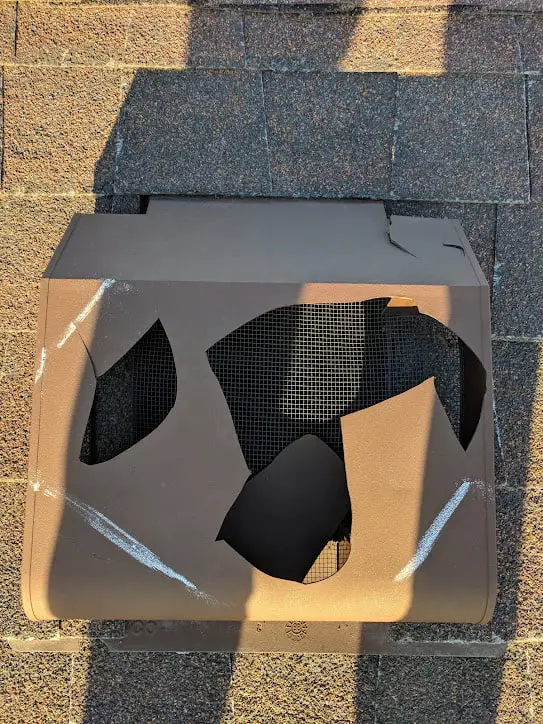
Imagine trying to go through the winter season with any of these holes on your roof. That is a bad leak just waiting to happen.
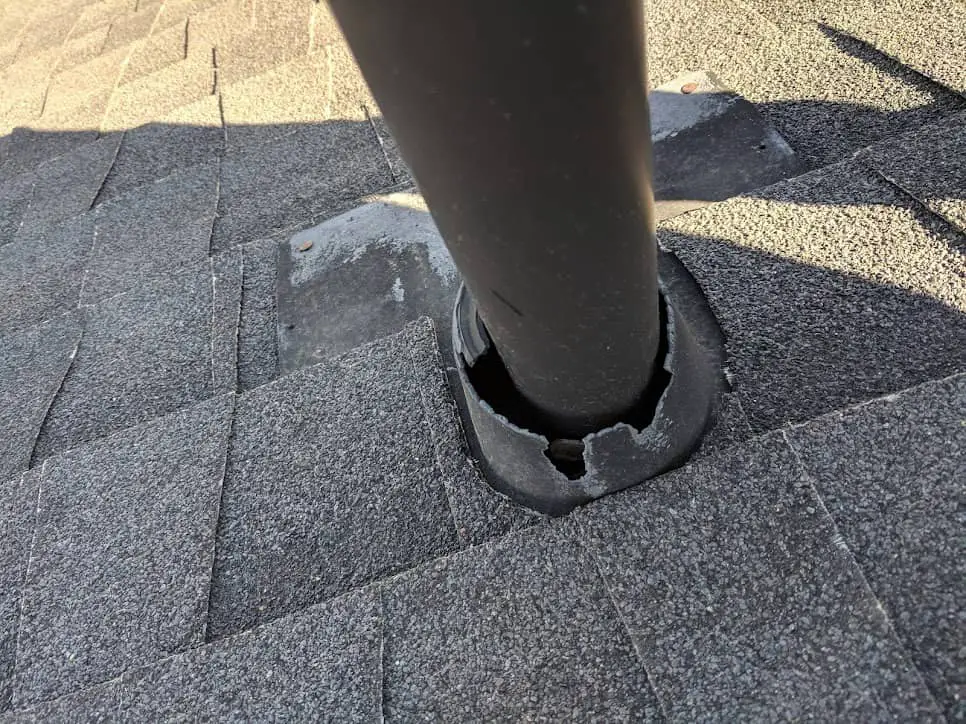
These plastic pipe flashings are always cracking. If you get metal-based ones with the rubber top, they will last you much longer than these cheap plastic ones.
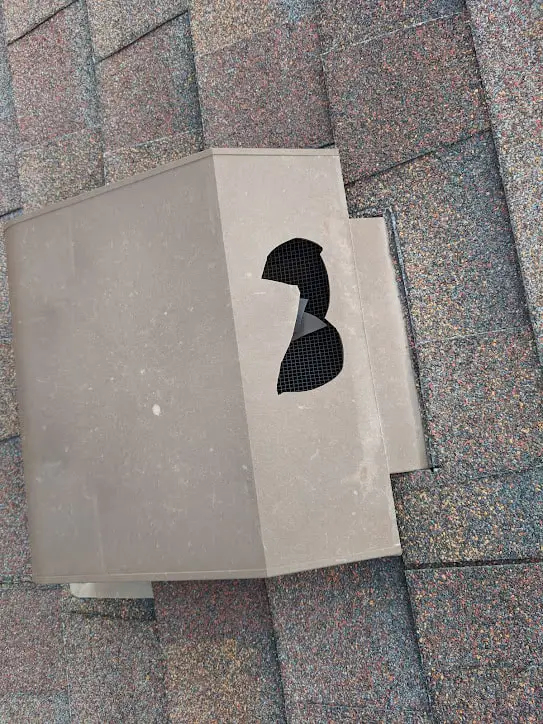
In general, choose metal over plastic, the extra cost is worth it.
Shingle Replacement or Full-roof Replacement?
Professional roofers will give you a detailed report of the problems assessed during the inspection. It’s possible that loose shingles only need to be secured or re-sealed. For fixing an already installed shingle, below are the steps if you prefer to do them yourself:
1 | Prepare the materials needed, namely: roof sealant tar, caulking gun, utility knife, putty knife, and red brick.
2 | Cut the sealant tube at an angle of 45 degrees using the utility knife. Load it to the caulking gun.
3 | Lift the shingle to be fixed fully with a putty knife.
4 | Press the trigger of the caulking gun firmly to apply a thick dab of the tar sealant.
5 | Press it down on the roofing shingle.
6 | Place the brick on top of the shingle for 24 hours to let the adhesive set.
Normally, it’s better to replace them with new shingles. It’s more cost-effective this way because it can add to the lifespan of your roof, as opposed to re-using an already damaged shingle. It’s important to remember, though, that shingle replacement is better done by professional roofers for safety and assurance of quality.
When a roof has maxed out its lifespan you will know if almost all the shingles are lifting or curling. If this is the situation, you are likely better off with a full-roof replacement. It would be the most practical and the best long-term fix you could have for your roof.
Again, I recommend finding a professional roofing contractor through Home Advisor because they allow you to compare prices and choose the best contractor that works for you.
How Do You Secure Shingles?
Stopping your shingles from lifting due to natural causes could be more challenging than preventing them from lifting due to improper installation. To ensure optimum security for your shingles, the best you could do would be to drive enough nails and seal the shingles down properly.
There are proper nailing techniques you can follow to do this. Many different roofers will have their own opinion about the proper nailing techniques. My recommendation for you is to follow the manufacturers’ guidelines based on the brand of shingles you are using.
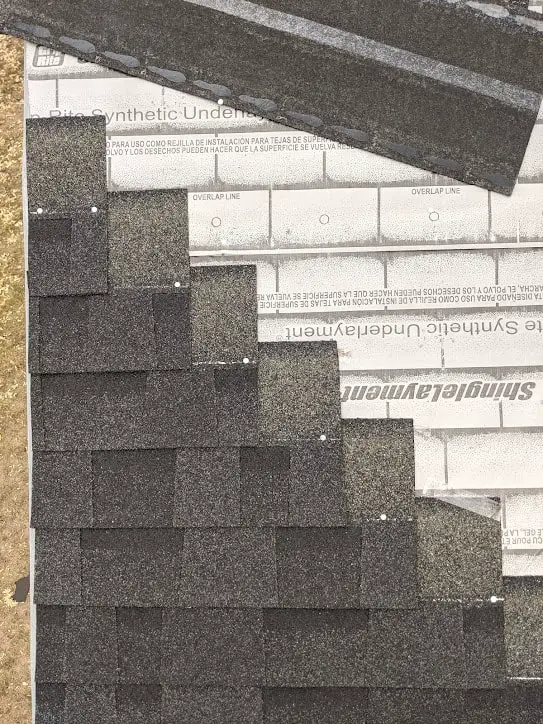
This way if you do experience problems with the shingles blowing off, you are more likely to get a warranty on them and could get them replaced for free.
Another thing to note is the end shingle. The end shingle is the very first and the very last shingle of a row that you put on. It is the shingle that is on the edge of the roof. These are more prone to blowing off especially if they are small.
One strategy I use is I try to avoid making the end shingles too small. I try not to make the end shingle smaller than 3 inches. If you cut and follow a good shingle pattern you shouldn’t have to worry about this too much.
Related Questions
Why roof shingles lifting? Roof shingles lift due to a variety of factors such as bad weather or high winds, improper installation or installation of damaged shingles, foot traffic, and new roof installations. They generally have similar causes to curling and buckling shingles. There are several things you can do to fix lifting shingles.
How do I stop my shingles from lifting? You can help prevent your shingles from lifting by ensuring that they are installed properly and that all materials are of high quality. It may be harder to prevent lifting due to bad weather but to avoid further damage, fix the shingles as soon as you spot a problem.
Do curling shingles need to be replaced? Yes, as soon as possible. Lifting, curling, and buckling shingles need to be replaced to prevent roof leaks and prevent further roofing damage. If almost all of your shingles are lifting or curling, it will be wiser to have a full-roof replacement.
